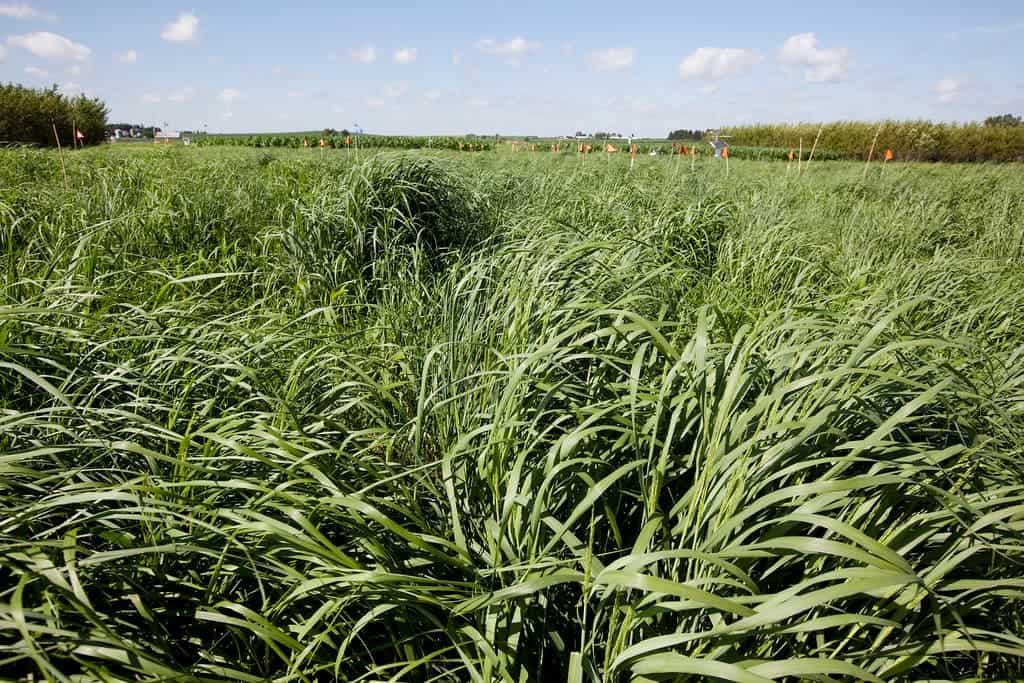A common species of prairie grass can help clean soils of dangerous chemicals released by military-grade compounds, a new paper reports. The only catch (at least, in the eyes of some), is that we need to genetically modify it for the task.

Genetically modified (GM) switchgrass (Panicum virgatum) can be used to purge soils of RDX residues, according to new research. RDX belongs to the nitramide chemical family, is flavorless, odorless, and extremely explosive. Pound for pound, it’s more powerful than dynamite. Given its high stability and ability to explode hard, RDX was in use in military-grade munitions during (and since) WW2. You’ve probably heard of C-4; RDX is its main component, alongside some plasticizing agents.
One downside of using RDX on a wide scale (that, admittedly, wouldn’t factor in very much during an active conflict) is that it can be quite damaging to the environment. In particular, compounds produced by RDX after it detonates (in combat or in firing ranges) spread around the point of impact and accumulate in groundwater, where they can pose a very real threat to any humans or wildlife they come into contact with. RDX stored in munition dumps, buried in minefields, or in rounds discarded improperly will also leech such compounds into their environment.
Genetically modified help
However, one species that’s traditionally employed against soil erosion can be modified to remove these compounds from the soil. The study, led by members at the University of York, has shown that this approach has promise at least when talking about the land on live-fire training ranges, munitions dumps, and minefields. Theoretically, however, it should be applicable wherever switchgrass can grow.
“The removal of the toxic RDX from training ranges is logistically challenging and there is currently a lack of cost-effective and sustainable solutions,” explains Dr. Liz Rylott from the Department of Biology and Director of the Centre for Novel Agricultural Products (CNAP), co-author of the study.
“Our research demonstrates how the expression, in switchgrass, of two bacterial genes that have evolved specifically to degrade RDX gives the plants the ability to remove and metabolize RDX in the field at concentrations relevant to live-fire military ranges. We demonstrated that by inserting these genes into switchgrass, the plant then had the ability to degrade RDX to non-detectable levels in the plant tissue.”
RDX-bearing ammo is still commonly used at firing ranges for training purposes, and has been for several decades already. This has led to high and widespread levels of groundwater contamination around such sites, which is never good news.
The authors explain that their approach involved grafting two genes from bacteria that are known to break down RDX into switchgrass. These plants — essentially GMOs at this point — were then grown on contaminated soil at one US military site. The plants grew well and had degraded the targeted compounds below detectable in their own tissues levels by the end of the experiment.
All in all, the grass degraded RDX at a rate of 27 kgs per hectare, which isn’t bad at all. According to the team, this is the most successful attempt to use plants to clean organic pollutants in the field to date. Processes that use plants for this purpose are collectively known as phytoremediation, and they’re a subset of the greater field of bioremediation, which involves the use of any type of organism or biological process for this task.
The findings here are of particular interest as organic pollutants, in general, tend to interact heavily with their environment (meaning they cause quite a lot of damage) while also being resistant to natural degradation processes (meaning they last for a long time in the wild). RDX in particular is of growing concern in the US. The Environmental Protection Agency (EPA) has it designated as a priority pollutant, with more than 10 million hectares of military land in the US being contaminated with weapons-associated compounds, RDX making up a sizable chunk of that contamination.
“The recalcitrance of RDX to degradation in the environment, combined with its high mobility through soil and groundwater, mean that plumes of toxic RDX continue to spread below these military sites, threatening drinking water supplies,” explains Professor Neil Bruce, also from CNAP, the study’s corresponding author.
One example the paper cites is that plumes of RDX pollution were found in groundwater and aquifers beneath the Massachusetts Military Reservation training range in Cape Cod back in 1997. This aquifer was, in effect, the only source of drinking water for half a million people, and the discovery prompted the EPA to ban the use of all live ammo during training at this site.
The paper “Field trial demonstrating phytoremediation of the military explosive RDX by XplA/XplB-expressing switchgrass” has been published in the journal Nature Biotechnology.









